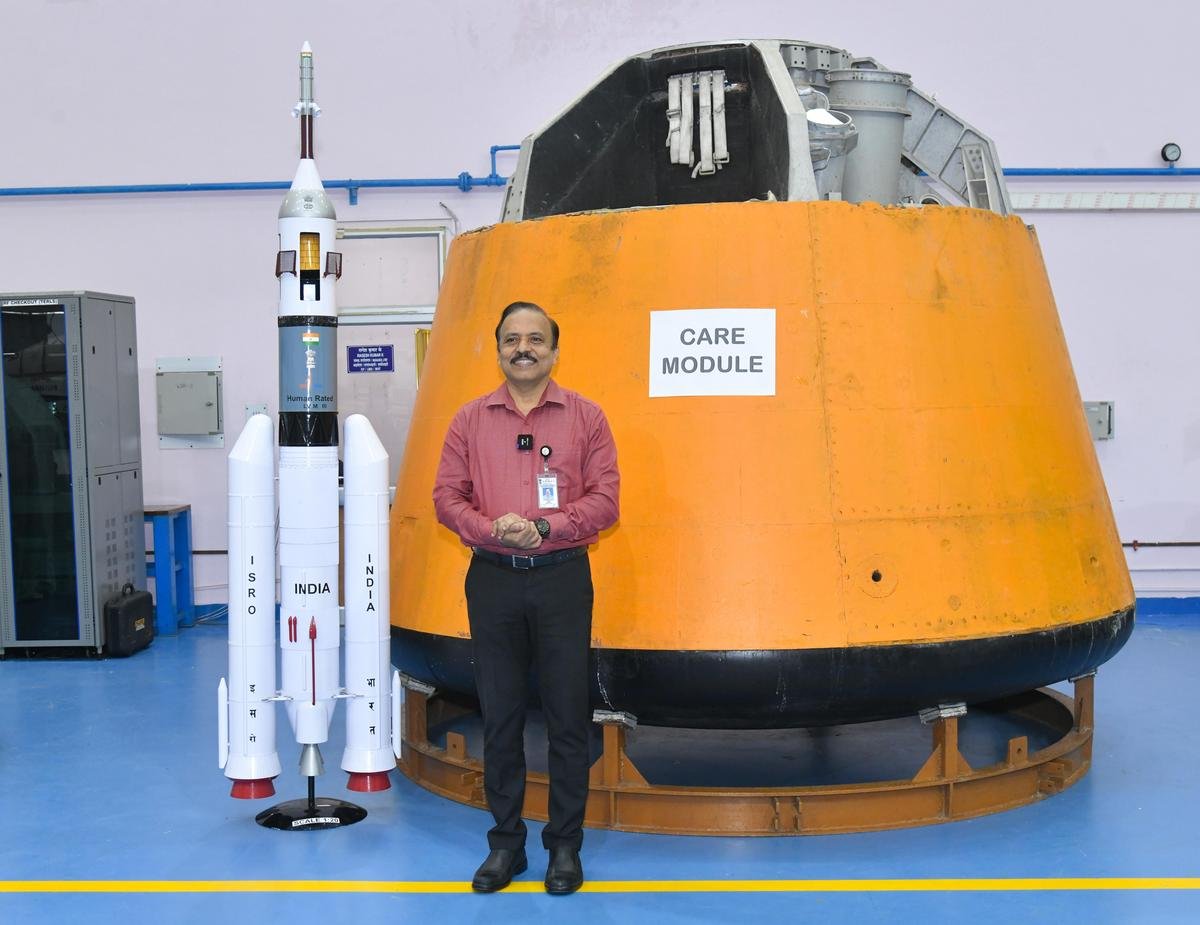According to S. Unnikrishnan Nair, Director of the Vikram Sarabhai Space Centre (VSSC), Gaganyaan-G1 is the first of three uncrewed test missions that will precede India’s first human spaceflight. It is intended to replicate the actual flight from start to finish and validate key technologies and capabilities, such as the Human-rated Launch Vehicle Mark-3 (HLVM3).
On December 18, the Indian Space Research Organization (ISRO) marked the tenth anniversary of the sub-orbital Crew Module Atmospheric Re-entry Experiment (CARE) mission of 2014 by starting the “stacking,” or assembly, of HLVM3 at the Satish Dhawan Space Centre in Sriharikota.
Regarding the impending HLVM3-G1 mission, Dr. Unnikrishnan Nair told The Hindu that the VSSC, ISRO’s principal launch vehicle facility at Thumba here, is making progress on integrating the crew module that will fly on board the mission. Upon completion, the crew module will be moved to Bengaluru’s U.R. Rao Satellite Centre (URSC) to be integrated with the service module.
The orbital module is composed of the crew module and the service module. “The orbital module will be transported to Sriharikota to be placed aboard the launch vehicle following a series of tests, including thermo-vacuum tests at the URSC,” stated Dr. Unnikrishnan Nair, the inaugural Director of the Human Space Flight Centre (HSFC), Bangalore.
The orbital module of the HLVM3-G1 mission will orbit the earth in an elliptical path measuring 170 km by 430 km. After that, it will be moved into a circular orbit. The crew module, which has several redundancies and improved safety margins, will separate for a controlled re-entry into Earth’s atmosphere and splashdown in the Bay of Bengal after the orbital module de-orbits.
The purpose of the HLVM3-G1 mission is to verify the skills and technologies required for a manned mission. According to Dr. Unnikrishnan Nair, “it is designed as an end-to-end mission covering lift-off, injection into orbit, re-entry, splashdown, and ‘circularization’ of orbit.” The humanoid robot Vyommitra, created by the ISRO Inertial Systems Unit (IISU), will also undergo flight testing as part of the G1 mission.
The ISRO recently said that all systems had been “tested for enhanced reliability” and that the LVM3 vehicle’s human rating was finished. Dr. Unnikrishnan Nair said the associated testing had taken nearly three years. After passing the human-rating process, the launch vehicle’s components—the C32 cryogenic stage, the L110 liquid stage, and the S200 solid rocket boosters—have reached Sriharikota.
The HLVM3 is different from the traditional LVM3 (previously called the Geosynchronous Satellite Launch Vehicle Mk-III). There is a difference in the aerodynamic configuration. The satellite is typically protected by a bulbous payload fairing on top of the vehicle. At the very top of this is the crew escape system. It will contain the orbital module. The crew escape system is linked to the crew module. The vehicle’s overall height has climbed to 53 meters, an increase of about 10 meters, according to Dr. Unnikrishnan Nair.
Prior to the manned launch, ISRO is preparing two additional uncrewed missions, G2 and G3. According to Dr. Unnikrishnan Nair, the parameters of these two test missions will be the same.

